The term sawlog is a log of suitable size for sawing into lumber, processed at a sawmill. [1] This is in contrast to those other parts of the stem that are designated pulpwood. Sawlogs will be greater in diameter, straighter and have a lower knot frequency.
Sawlogs most often come from the "butt end" of the stem and are the most financially valuable part of the tree.

A cactus is a member of the plant family Cactaceae, a family comprising about 127 genera with some 1750 known species of the order Caryophyllales. The word "cactus" derives, through Latin, from the Ancient Greek κάκτος, kaktos, a name originally used by Theophrastus for a spiny plant whose identity is now not certain. Cacti occur in a wide range of shapes and sizes. Most cacti live in habitats subject to at least some drought. Many live in extremely dry environments, even being found in the Atacama Desert, one of the driest places on earth. Cacti show many adaptations to conserve water. Almost all cacti are succulents, meaning they have thickened, fleshy parts adapted to store water. Unlike many other succulents, the stem is the only part of most cacti where this vital process takes place. Most species of cacti have lost true leaves, retaining only spines, which are highly modified leaves. As well as defending against herbivores, spines help prevent water loss by reducing air flow close to the cactus and providing some shade. In the absence of leaves, enlarged stems carry out photosynthesis. Cacti are native to the Americas, ranging from Patagonia in the south to parts of western Canada in the north—except for Rhipsalis baccifera, which also grows in Africa and Sri Lanka.
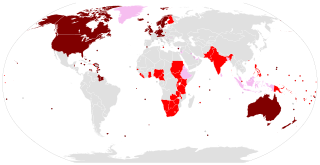
The Germanic languages are a branch of the Indo-European language family spoken natively by a population of about 515 million people mainly in Europe, North America, Oceania and Southern Africa. The most widely spoken Germanic language, English, is also the world's most widely spoken language with an estimated 2 billion speakers. All Germanic languages are derived from Proto-Germanic, spoken in Iron Age Scandinavia.
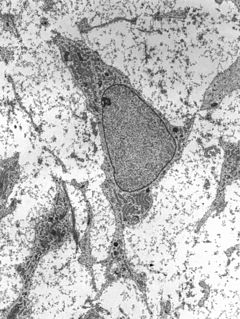
In multicellular organisms, stem cells are undifferentiated or partially differentiated cells that can differentiate into various types of cells and proliferate indefinitely to produce more of the same stem cell. They are the earliest type of cell in a cell lineage. They are found in both embryonic and adult organisms, but they have slightly different properties in each. They are usually distinguished from progenitor cells, which cannot divide indefinitely, and precursor or blast cells, which are usually committed to differentiating into one cell type.

Tubers are enlarged structures used as storage organs for nutrients in some plants. They are used for the plant's perennation, to provide energy and nutrients for regrowth during the next growing season, and as a means of asexual reproduction. Stem tubers form thickened rhizomes or stolons ; well known species with stem tubers include the potato and yam. Some writers also treat modified lateral roots under the definition; these are found in sweet potatoes, cassava, and dahlias.

Herbaceous plants are vascular plants that have no persistent woody stems above ground, including many perennials, and nearly all annuals and biennials.
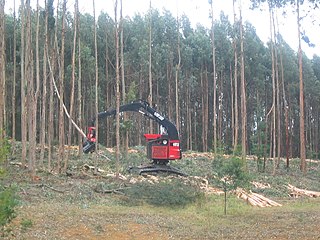
Pulpwood is timber with the principal use of making wood pulp for paper production.
An international nonproprietary name (INN) is an official generic and non-proprietary name given to a pharmaceutical drug or an active ingredient. INNs are intended to make communication more precise by providing a unique standard name for each active ingredient, to avoid prescribing errors. The INN system has been coordinated by the World Health Organization (WHO) since 1953.

A stem-and-leaf display or stem-and-leaf plot is a device for presenting quantitative data in a graphical format, similar to a histogram, to assist in visualizing the shape of a distribution. They evolved from Arthur Bowley's work in the early 1900s, and are useful tools in exploratory data analysis. Stemplots became more commonly used in the 1980s after the publication of John Tukey's book on exploratory data analysis in 1977. The popularity during those years is attributable to their use of monospaced (typewriter) typestyles that allowed computer technology of the time to easily produce the graphics. Modern computers' superior graphic capabilities have meant these techniques are less often used.

In phylogenetics, the crown group or crown assemblage is a collection of species, composed of the living representatives of the collection, the most recent common ancestor of the collection, and all descendants of the most recent common ancestor. It is thus a way of defining a clade, a group consisting of a species and all its extant or extinct descendants. For example, Neornithes (birds) can be defined as a crown group, which includes the most recent common ancestor of all modern birds, and all of its extant or extinct descendants.

The bow is the forward part of the hull of a ship or boat, the point that is usually most forward when the vessel is underway. The aft end of the boat is the stern.

A plant cutting is a piece of a plant that is used in horticulture for vegetative (asexual) propagation. A piece of the stem or root of the source plant is placed in a suitable medium such as moist soil. If the conditions are suitable, the plant piece will begin to grow as a new plant independent of the parent, a process known as striking. A stem cutting produces new roots, and a root cutting produces new stems. Some plants can be grown from leaf pieces, called leaf cuttings, which produce both stems and roots. The scions used in grafting are also called cuttings.
Science, technology, engineering, and mathematics (STEM) is a broad term used to group together these academic disciplines. This term is typically used to address an education policy or curriculum choices in schools. It has implications for workforce development, national security concerns and immigration policy. The science in STEM typically refers to two out of the three major branches of science: natural sciences, including biology, physics, and chemistry; and formal sciences, of which mathematics is an example, along with logic and statistics. The third major branch of science, social science such as: psychology, sociology, and political science, are categorized separately from the other two branches of science, and are instead grouped together with humanities and arts to form another counterpart acronym named HASS, rebranded in the UK in 2020 as SHAPE.

A woodlot is a parcel of a woodland or forest capable of small-scale production of forest products as well as recreational uses like bird watching, bushwalking, and wildflower appreciation. The term woodlot is chiefly North American; in Britain, a woodlot would be called a wood, woodland, or coppice.
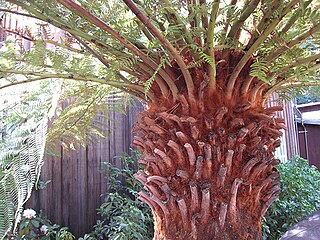
A caudex of a plant is a stem, but the term is also used to mean a rootstock and particularly a basal stem structure from which new growth arises.

Sawlog Township is a township in Hodgeman County, Kansas, USA. As of the 2000 census, its population was 93.
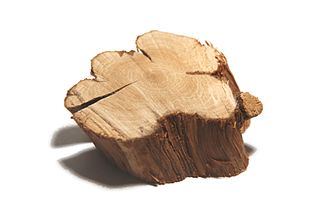
A woody plant is a plant that produces wood as its structural tissue and thus has a hard stem. In cold climates, woody plants further survive winter or dry season above ground, as opposite to herbaceous plants that die back to the ground until spring.

A stem is one of two main structural axes of a vascular plant, the other being the root. It supports leaves, flowers and fruits, transports water and dissolved substances between the roots and the shoots in the xylem and phloem, stores nutrients, and produces new living tissue.
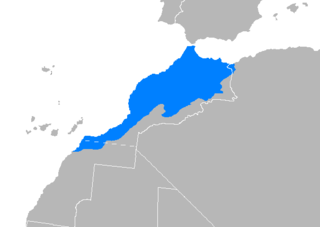
Moroccan Arabic, known as Darija in Morocco, is a form of vernacular Arabic spoken in Morocco. It is part of the Maghrebi Arabic dialect continuum and as such is mutually intelligible to some extent with Algerian Arabic and to a lesser extent with Tunisian Arabic. It is spoken as a first language by about 50% to 75% of Morocco's population. Most other Moroccans natively speak one of the Tamazight languages. Educated Moroccan Tamazight speakers can communicate in mainstream Moroccan Arabic.

March Rapids is an unincorporated community located in the town of Eau Pleine, Marathon County, Wisconsin, United States.

Proto-Slavic is the unattested, reconstructed proto-language of all the Slavic languages. It represents Slavic speech approximately from the 2nd millennium B.C. through the 6th century A.D. As with most other proto-languages, no attested writings have been found; scholars have reconstructed the language by applying the comparative method to all the attested Slavic languages and by taking into account other Indo-European languages.